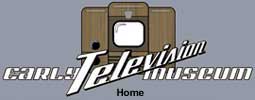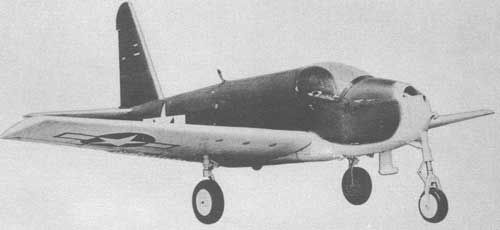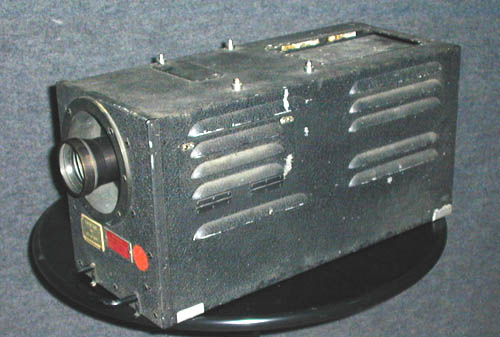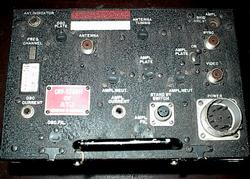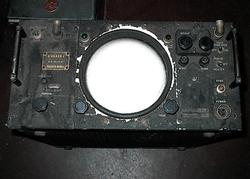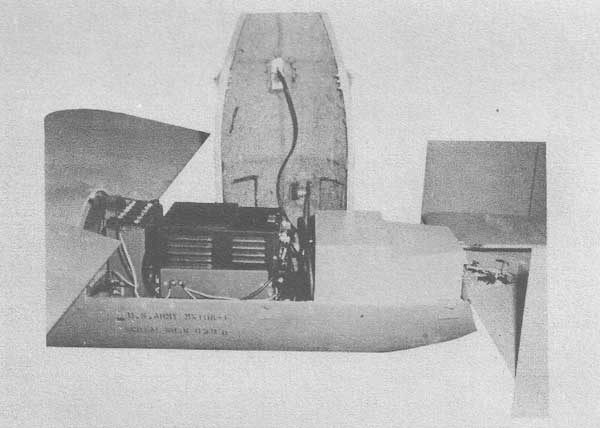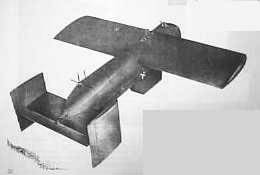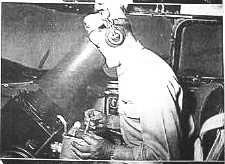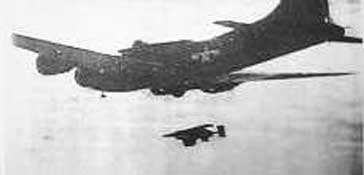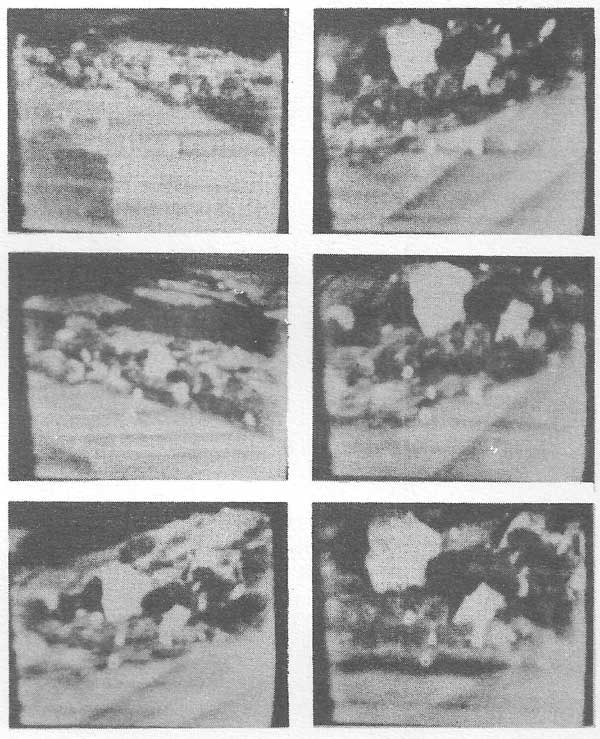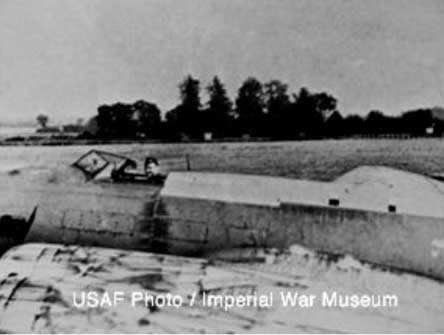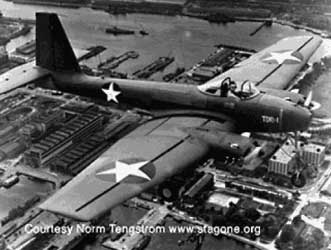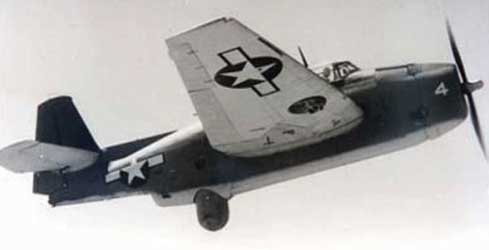Early Electronic Television
RCA's Television Activity During World War TwoAs early as August 1936, Lt Cdr D.S. Fahrney of the U.S. Navy suggested the development of unmanned remotely-controlled aircraft for use in combat. A low-priority program to develop these aircraft, called "assault drones" at that time, was begun, but progress was slow because necessary technology was simply non-existing. However, around 1940 two new key components were ready for testing, the radar altimeter (to prevent the drone from flying into terrain) and television (to make guidance from a stand-off distance possible). At the beginning of World War Two, RCA focused its TV engineering effort on developing military uses for television. A smaller version of the Iconoscope, the 1846, was developed to be put in a lightweight camera. In 1941, converted manned aircraft were flown under remote control, where the operator in the control plane no longer needed to keep visual contact with the drone but could instead watch a TV screen with an image from a drone-mounted camera. In April 1942, a TV-controlled drone was successfully guided into a target ship from a control aircraft 50 km (30 miles) away.
Navy LBE-1 "Glomb" television-equipped glider, was towed by the pilor plane to within a short distance of the target, then released. RCA's first system, called the Block I, was first orderd by the military in 1942. It consisted of the camera and transmitter, which were located in a wooden glide bomber, which was carried aloft under a B-17 bomber; and a receiver, which was located in the B-17. We have one of these cameras in our collection. For information on the various television systems developed by RCA, see Maurice Schechter's page. Here are three videos by Maurice about the history of RCA's systems: Many of these cameras were sold after the war as military surplus and were used by radio amateurs for television broadcasting. Here is an RCA document titled "RCA's Contribution to the War Effort Through Television, 1937-1946 which describes the project in detail: Another company that made cameras for the military was Remington-Rand. In addition, please see our page on Television during World War Two.
Camera
Side view of the Army's GB-4 radio controlled television glide bomb. The front third of the body was a 2000 pound demolition bomb.
Front view. The small wing surfaces gave the bomb an 8-1 glide angle, allowing it to be dropped at some distance laterally from the target.
Rear section with the upper half of the fuselage removed to show the transmitting and control equipment.
B-17 with Glide Bomber
This series of pictures, enlarged from a 16 mm film, shows a GB-4 glide bomb approaching a target in Germany. The target is the white objecct in the center of each picture. In the B-17, one person operated the television camera, while another person attempted to guide the glide bomber to its target. The glide bombers turned out to be difficult to control, and the pictures from the television cameras were poor. Few of the glide bombers actually hit their targets. Operation AphroditeIn 1944, another use was developed for the Block system. Operation Aphrodite used bombers, primarily B-17s, that had reached the point where they were no longer safe to fly. Here is a description of the program:
The planes used in the project were called "Weary Willies" by their crews. To make egress easy and to aid in the loading of explosives, engineers went so far as to cut the roof off of at least one B-17. The open-cockpit bomber, a unique aircraft if there ever was one, was dubbed “Roadster” by its crew. . Joe Kennedy, brother of President John Kennedy, was killed as one of the volunteer pilots in this operation. Here is an account of his part in Operation Aprodite and an eye witness account of his death, by Mick Muttitt, Blythburgh, England, written in April 1995:
Here is a video in two parts describing the project
Clips from newreels about early guided bombs: TDR-1 Another program that used the Block television system developed by RCA was TDR-1 (Torpedo Drone 1). The TDR-1 Assault Drone (manufactured by Rudolf Wurlitzer Company,and assembled at Interstate Aircraft Plant, DeKalb Division) carried a 2,000 lb. bomb load or torpedo..Its Control Plane, a TBM (design by Grumman (TBF) and manufactured by General Motors), carried a crew of four which included two pilots, each of whom, by transmitting radio signals could control the flight of the drone (left, right, up, or down) and also its speed and altitude. The latter through a radio altimeter called "ACE" with settings from 50 to 1500 feet above sea level. One of the two pilots, the one in the front seat of the Control Plane, was the Commander of this "element" (the Drone and its Control Plane). The Control Plane Pilot (CPP) took control of the drone immediately after takeoff and directed the drone to within "television sight" of the target. In the second seat, directly behind the CPP, is the Drone Control Pilot DCP. This is his primary job He is hunkered down over a small (six inch face) television screen receiver. The picture is transmitted from a TV camera located in the nose of the drone. The TV picture he sees is what he would see if he were in the drone looking straight ahead. As soon as he has a picture of the target on his TV screen he notifies the CPP. At this point, the Control Plane Pilot can leave the area - increase his "open out" or "standoff range" from the target, since the Drone Control Pilot has taken over and guides the drone on its "run-in". He finally crashes the drone against the target or performs other functions such as dropping bombs or laying smoke. At one time in March 1943, the Navy had plans to order up to 2000 assault drones, but program delays caused by technical problems and the low priority meant that this number was soon drastically reduced to about 300. In 1944, a single unit with TDR-1 drones and converted TBM-1 Avenger control planes was deployed in the Pacific. In September and October that year, 46 TDR-1 drones were expended, of which 18 scored hits on the target. However, the Navy's assault program had already been terminated shortly before these operational missions, mainly because of delays, mediocre test results, and the success of conventional weapons in the Pacific war. A total of 189 TDR-1s had been built.
TDR-1 Drone, shown in the ferry configuration
TBM-1/TBF-1 Control Plane Here is a description from http://www.designation-systems.net/dusrm/app1/bq-4.html:
|
